Hunting season is upon us and it’s that special time of year to get after those big bulls. It seems the September rut goes by in a flash and we are into October. The October post-rut period can be one of the toughest times of year to harvest a good bull. It’s after the rut and prior to the cold November weather that pushes big bulls down and keeps them feeding. I have a ton of experience hunting bulls in this October season. I feel to be a consistent elk killer you have to take advantage of and be effective in every season. October offers late bow seasons and the majority of rifle seasons open this time of year. It takes an understanding of what the bulls are doing and specialized tactics but big bulls are out there for the taking!
Elk behavior
October runs the gamut of different elk behavior and it’s important to know what to key in on. In the beginning of the month there is still some good rutting taking place. You can still catch a big bull tending cows looking for that second cycle estrus. Any cows that did not get bred in September will come back into estrus and bulls know this. Now, it can be hit or miss, but if you find a hot cow, the bulls can be rockin’. This time of year, I do not call much. I grab good vantage points and glass and listen for bugles. Elk this time of year tend to gather in big groups and I will look over these groups to see if there is a big bull hanging around. A lot of times a big bull will come down at night to search for a hot cow and then leave the herd when the lights come on, so be on the lookout for that. This is a great time of year to catch a big bull slipping up still hanging with the herd.
As we get into the heart of October, the rut is ending and the bulls start to separate themselves from the herds. Now you can still catch some younger bulls hanging with the cows but the big boys start moving off. Like rock stars at the end of a long tour, these bulls are run down and beat up from the rut. They usually move off, running solo or maybe with a couple of buddies, but they just want to hide in a hole and lick their wounds. They are desperately trying to put weight back on to make it through the winter. During the rut they let their guard down, but this time of year they start to tighten up their programs. There usually isn’t much cold weather or snow, so they tend to come out late and put away early feeding to feed all night long. They find high country secluded basins, slides or small openings to work and then spend the middle of the day bedded in the thick timber.
By late October you get the chance for a little weather. Cold temps and snow are the equalizers for elk this time of year. It forces them out of the extreme high country to more manageable elevations. It also will make those big bulls feed longer in the morning and earlier in the evening, allowing you a better chance to catch them. Usually by now the bulls are grouped up into small bachelor groups. They are still hanging in secluded country but are getting easier to catch out feeding. Understanding what bulls are doing and what bulls are looking for is a big part of October hunting.
Hunting tactics
Opening day of rifle season is like a holiday here in the West. It’s that special time of year where you get to break the rifle out for your shot at a big bull. You get the extended range to take that monster if given the chance. That is the good. The bad is, there are a lot of other guys out going hard for the same opportunity. You have to deal with hunting pressure and your biggest challenge is locating a good bull. There are some different ways to play opening day and it is a great chance to hang your tag on a good bull.
One tactic I use for opening day is scouting early for a good bull, then sitting on him. I will scout hard for a couple days leading up to the opener looking for a mature bull. I travel country and get to the best vantage points for first and last light. Once I find a big bull, I keep tabs on him. It’s important not to get too close and let him know you are there. I watch from a distance making a solid game plan for opening day. I will usually use a small bivy or pup tent camp to live with them. I then will move into striking distance for first light. In a perfect world, when the lights come on, you are waiting in a shooting position and bust that big six in the first 20 minutes of season.
Another way I will play opening day is to sit on spots elk move through. There are so many guys going hard on the first few days of season moving elk around; take advantage of this. Sit in saddles and on open hillsides where you believe elk will be pushed through. I also like to sit on master vantage points for the entire day. It allows me to watch and keep tabs on any elk that are bumped or are on the move. If I do spot a good bull I can opt to get in front of him or possibly bed him in a group of trees. I very rarely go after a put away bull unless I know exactly where he is. In that case I will try and plot my stalk and where I will shoot from. If I just know the group of trees he disappears in I will watch and wait. I try and figure out where he will feed out in the evening and set up for that. It’s a higher percentage to wait and let him feed out in an opening unaware of your presence than to go in the thick cover after him. I’ve just learned through the years that when I went in after a bull, most of the time I would blow him out before I ever got a chance to put some lead in him.
After opening day, the bulls are going to be tucked away in secluded country where they can get away from pressure. I usually find bulls this time of year way up high in the mountains. A lot of times you can find a bull back in his favorite rutting grounds working a small opening. It’s not uncommon to find these bulls at 9,000 feet or higher. Remember, they have been chased out of all the easy to access spots so you are going to have to put in work this time of year. I make plans to get back to the most secluded country. I spend all my effort getting to the best vantage points at the best times. It doesn’t do any good to get to a good spot at 9 or 10; these bulls are already put away for the day. You need to be hiking in the dark or camping close to the vantage point. This is the key to finding big bulls this time of year. Also, sit on those vantage points until absolute last light. Remember these bulls are running tight programs this time of year and hardly show themselves during daylight.
I will work country by planning where I will be each first and last light. I will commit myself to the best vantage points that give me a commanding view of country; the more you can see the better. Bulls are giant bleach blond animals you can see from miles away. Believe in your glass and work hard to pinpoint their location. Don’t forget about micro drainages, these are smaller more secluded features within larger drainages or basins. I will set up with the best view of a basin and watch and wait. Also, if you are set up on a good ridgeline you can work it using a mobile vantage point. During the first hour or last hour of light you work along that ridge. You stop and glass every new angle you get looking down into elk country. Exhaust every possibility.
As it gets later in the season and you get some colder weather you can start working the mid-range, more classic elk terrain. I work it using the same tactics with ridgelines and vantage points but now you have a better chance at locating a bull. I will also use extreme long-range glassing techniques this time of year. I will grab vantage points from way down low on the valley floor and look over miles and miles of country. Also, if you get a good fresh snow you can look for the sign of bulls. Once that sun gets on the snow, the tracks stick out and you can see where bulls fed that morning. Snow is a huge asset to figuring out where the elk are hanging and then focusing your energy in that country.
The midseason gets overshadowed by the September rut and the November late season hunt, but it is a great time to tag a big mature bull. You just have to understand what elk are doing and then focus your efforts on this type of terrain. It’s important to not get frustrated this time of year, just keep putting in the work. You have to keep the faith that if you keep hunting hard you will turn up a good bull. The mental part of the game is such a huge piece to the puzzle. Keep working hard, getting yourself into good secluded country and continue to get to the right vantage points at the right times to pick the landscape apart. Those big bulls are out there in October for the guy’s willing to put in their “rock it” and put in the work.
 Eastmans' Official Blog | Mule Deer, Antelope, Elk Hunting and Bowhunting Magazine | Eastmans' Hunting Journals
Eastmans' Official Blog | Mule Deer, Antelope, Elk Hunting and Bowhunting Magazine | Eastmans' Hunting Journals
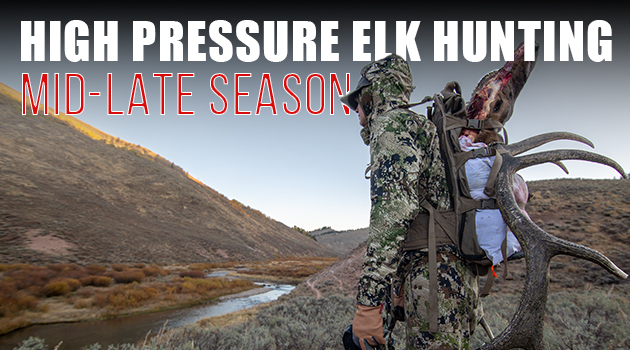

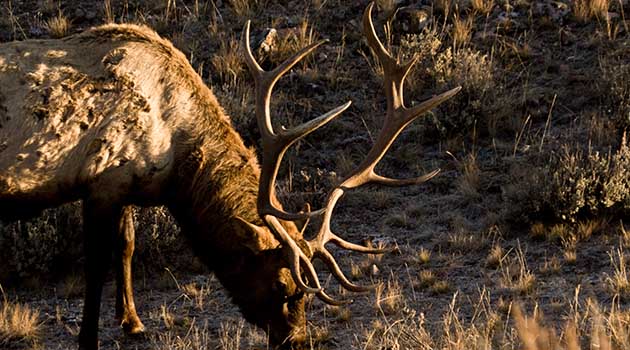
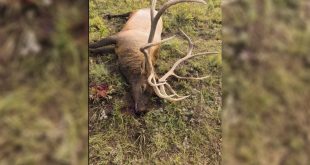
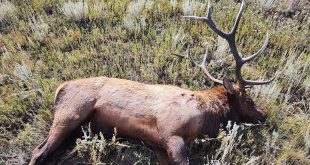
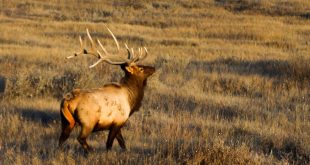
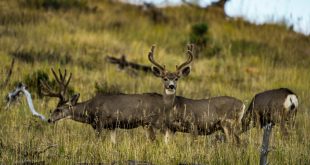
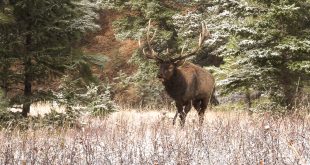
4 comments
Pingback: High Pressure Elk Hunting: Mid-Late Season - Eastmans' Official Blog | Mule Deer, Antelope, Elk Hunting and Bowhunting Magazine
Pingback: Successful Bowhunters: Clint Casper - Eastmans' Official Blog | Mule Deer, Antelope, Elk Hunting and Bowhunting Magazine | Eastmans' Hunting Journals
Pingback: High Pressure Elk Hunting: Mid-Late Season
Pingback: 5 Tips for Locating More Elk During the Rut - Eastmans' Official Blog | Mule Deer, Antelope, Elk Hunting and Bowhunting Magazine | Eastmans' Hunting Journals